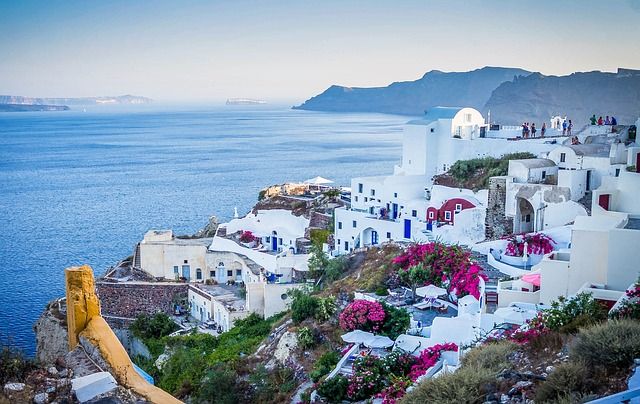Uncovering the Rich History of South America: A Heritage Trip Through the Region's Fascinating Destinations
Share
| Table of Contents | |
|---|---|
| 1. Exploring the ancient civilizations of South America | |
| 2. Historical landmarks and UNESCO World Heritage Sites in South America | |
| 3. Colonial history in South America: From the Spanish conquest to independence movements | |
| 4. Indigenous cultures and their contributions to South American history | |
| 5. Modern history and political developments in South America | |
South America, a continent of diverse landscapes and vibrant cultures, is also steeped in a rich and fascinating history. From ancient civilizations to colonial conquests, from indigenous cultures to modern political developments, South America offers a treasure trove of historical experiences waiting to be explored. Embarking on a heritage trip through the region's fascinating destinations allows us to delve into the past and gain a deeper understanding of the cultural tapestry that makes up South America today.

Exploring the ancient civilizations of South America
To truly grasp the depth of South America's history, one must immerse oneself in the wonders of its ancient civilizations. From the awe-inspiring ruins of Machu Picchu in Peru to the enigmatic Nazca Lines in Chile, these archaeological sites offer a glimpse into the lives and achievements of the Incas, the Mayas, and other indigenous peoples who once thrived in this region. The advanced engineering and astronomical knowledge displayed by these ancient cultures continue to astound researchers and visitors alike.
Exploring the ancient civilizations of South America is a fascinating journey into the rich history and cultural heritage of the continent. South America is home to several ancient civilizations that have left behind impressive architectural marvels, intricate artwork, and intriguing myths and legends.
One of the most well-known ancient civilizations in South America is the Inca Empire. The Incas built remarkable structures, such as the iconic Machu Picchu in Peru, which is now considered one of the New Seven Wonders of the World. The Inca civilization also developed a highly advanced agricultural system known as terracing, which allowed them to cultivate crops successfully in the challenging mountainous terrain. Another remarkable ancient civilization in South America is the Moche civilization, which thrived in what is now modern-day Peru from around 100 to 800 AD. The Moche people were skilled artisans and craftsmen, known for their intricately designed pottery and exquisite metalwork. They also built impressive adobe pyramids, such as the Huaca del Sol and Huaca de la Luna, which provide important insights into their religious beliefs and social structure.
Moving further south, we encounter the Nazca civilization, known for their famous Nazca Lines. These giant geoglyphs, etched into the desert floor, depict various animals, plants, and geometric shapes. The purpose and meaning behind these lines continue to intrigue archaeologists and researchers to this day.

The Tiwanaku civilization, located in what is now Bolivia, was another significant ancient civilization in South America. They constructed impressive stone structures, such as the Gate of the Sun and the Akapana Pyramid. The Tiwanaku people were skilled architects and engineers, and their achievements in stone carving and construction are truly remarkable.
These are just a few examples of the diverse and complex ancient civilizations that once thrived in South America. Exploring these civilizations allows us to gain a deeper understanding of their cultural achievements, technological advancements, and the ways in which they shaped the continent's history. For those interested in exploring these ancient civilizations, there are numerous opportunities to visit archaeological sites, museums, and cultural centers throughout South America. By immersing yourself in the remnants of these ancient cultures, you can marvel at their achievements and gain a newfound appreciation for the rich heritage of South America.
Historical landmarks and UNESCO World Heritage Sites in
South America
South America boasts a plethora of historical landmarks and UNESCO World Heritage Sites that bear witness to its rich history. From the stunning Iguazu Falls on the border of Argentina and Brazil to the colonial city of Cartagena in Colombia, these sites provide a window into the past. Each site has its own unique story to tell, whether it be the architectural wonders of the Jesuit Missions of the Guaranis in Paraguay or the cultural significance of the historic center of Salvador de Bahia in Brazil.
One prominent example of a historical landmark in South America is Machu Picchu in Peru. This ancient Incan city, perched high in the Andes Mountains, is an architectural marvel and a testament to the ingenuity of the Incan civilization. Its well-preserved stone structures and terraces continue to awe visitors, offering a glimpse into the past.

Another notable UNESCO World Heritage Site in South America is the historic center of Salvador de Bahía in Brazil. This colonial city, founded in the 16th century, showcases Portuguese architecture and is a melting pot of African, European, and indigenous cultures. The colorful buildings, cobblestone streets, and vibrant local traditions make it a must-visit destination for history buffs.
Moving further south, Argentina boasts the stunning Iguazu Falls, which is not only a natural wonder but also a UNESCO World Heritage Site. These awe-inspiring waterfalls, located on the border between Argentina and Brazil, are a spectacle to behold. With their immense power and beauty, they attract millions of visitors each year.
In Colombia, the walled city of Cartagena is another UNESCO World Heritage Site that showcases the country's colonial history. This beautifully preserved city features colorful buildings, charming plazas, and ancient fortifications. Exploring its narrow streets and immersing oneself in its vibrant culture is like stepping back in time.
These are just a few examples of the historical landmarks and UNESCO World Heritage Sites that can be found in South America. Each site offers a unique glimpse into the continent's rich history and cultural diversity. Whether it's exploring ancient ruins, admiring colonial architecture, or witnessing the power of nature, South America has something to offer every history enthusiast.
Colonial history in South America: From the Spanish conquest to independence movements
The colonial history of South America is
deeply intertwined with the arrival of the Spanish conquistadors and their
subsequent rule over vast territories. The impact of colonization can still be
felt in the region today, from the language spoken to the architectural styles
that grace many cities. However, South America also witnessed a wave of
independence movements in the 19th century, as countries such as Argentina,
Peru, and Chile fought for their freedom from colonial powers. These movements
shaped the modern nations we see today and are an integral part of South
America's history.
Indigenous cultures and their contributions to South
American history
The indigenous cultures of South America have left an indelible mark on the continent's history. From the ancient wisdom of the Quechua people in Peru to the vibrant traditions of the Mapuche in Chile, these cultures have contributed immensely to South American society. Their knowledge of agriculture, medicine, and spirituality continues to influence the region, and their resilience in the face of colonization is an inspiration to many.

South America's role in the slave trade and the impact on
its history
The dark chapter of the slave trade also
left a profound impact on South America's history. Millions of enslaved
Africans were forcibly brought to the continent to work in plantations and
mines, leaving a lasting legacy on the cultural fabric of countries such as
Brazil, Colombia, and Venezuela. The Afro-Latinx culture that emerged from this
painful period is a testament to the strength and resilience of those who
endured and fought against oppression.
The influence of European immigrants on South American
culture and history
In addition to the indigenous and African
influences, South America also experienced significant waves of European
immigration during the 19th and 20th centuries. Italians, Spaniards, Germans,
and other European groups brought their customs, languages, and traditions,
which merged with the existing cultures to create a unique blend. Tango in
Argentina, samba in Brazil, and Oktoberfest celebrations in Southern Brazil are
just a few examples of the European influence that can still be seen today.
Modern history and political developments in South America
The 20th century witnessed a series of
political upheavals and transformations in South America. From military
dictatorships to democratic revolutions, the region has experienced its fair
share of challenges and triumphs. The rise of populist leaders, such as Eva
Perón in Argentina and Hugo Chávez in Venezuela, has shaped the political
landscape and sparked debates about the role of government in society.
Understanding the modern history of South America is crucial to comprehending
the complexities of its present-day dynamics.
Must-visit heritage destinations in South America
A heritage trip through South America would be incomplete without visiting some of its must-see destinations. The ancient city of Cusco in Peru, with its mix of Inca and Spanish architecture, is a testament to the region's rich history. The vibrant streets of Buenos Aires, Argentina, offer a glimpse into the tango culture that has become synonymous with the city. The historic center of Quito, Ecuador, with its well-preserved colonial architecture, is a UNESCO World Heritage Site that showcases the region's colonial past. These are just a few examples of the countless heritage destinations that South America has to offer.

Preserving and promoting South America's rich history
Preserving and promoting South America's
rich history is essential to ensure its continued appreciation and
understanding. Museums, archaeological sites, and cultural festivals play a
vital role in showcasing the region's heritage. Governments and organizations
must invest in the preservation and restoration of historical sites, as well as
in educational programs that raise awareness about South America's diverse
history. By doing so, future generations can continue to explore and learn from
the past.
Embracing the cultural heritage of South
America
Embarking on a heritage trip through South
America is a truly enriching experience. From ancient civilizations to colonial
legacies, from indigenous cultures to modern political developments, the
continent offers a captivating journey through time. By embracing and
appreciating the cultural heritage of South America, we gain a deeper
understanding of its people and their stories. So, pack your bags and embark on
a heritage trip of a lifetime, where the past comes alive and the present is
forever shaped by the past.
Experience the captivating history of South America for yourself. Plan your heritage trip today and uncover the rich tapestry of cultures that make up this diverse continent. Do not forget to pick an eSIM for your travel to South America. These digital SIM Cards help you stay mobile and provide you the cheapest calling rates and roaming plans for South America !
Frequently Asked Questions

Related Blogs
 Czech Out These Must See Destinations : Planning a Trip to Czech Republic
Czech Out These Must See Destinations : Planning a Trip to Czech Republic Unforgettable Memories : Planning Your Dream Wedding in Latin America
Unforgettable Memories : Planning Your Dream Wedding in Latin America A Culinary Adventure in Hong Kong: Top Dishes to Try During Your Visit
A Culinary Adventure in Hong Kong: Top Dishes to Try During Your Visit Delight Your Taste Buds: Top 7 Dishes to Try on Your Next Trip to the Bahamas
Delight Your Taste Buds: Top 7 Dishes to Try on Your Next Trip to the Bahamas Discover Russia's Hidden Gems: Unforgettable Destinations and Experiences for Your Travel to Russia Bucket List
Discover Russia's Hidden Gems: Unforgettable Destinations and Experiences for Your Travel to Russia Bucket List Unveiling the Hidden Gems of Greece: Top Excursions to Explore
Unveiling the Hidden Gems of Greece: Top Excursions to Explore Unforgettable Adventures in Slovenia: Top Excursions for Thrill Seekers and Nature Lovers
Unforgettable Adventures in Slovenia: Top Excursions for Thrill Seekers and Nature Lovers Discover the Best of India: Top Excursions to Add to Your Bucket List
Discover the Best of India: Top Excursions to Add to Your Bucket List The Ultimate Gamblers' Paradise: Why You Can't Resist Traveling to Macau
The Ultimate Gamblers' Paradise: Why You Can't Resist Traveling to Macau

